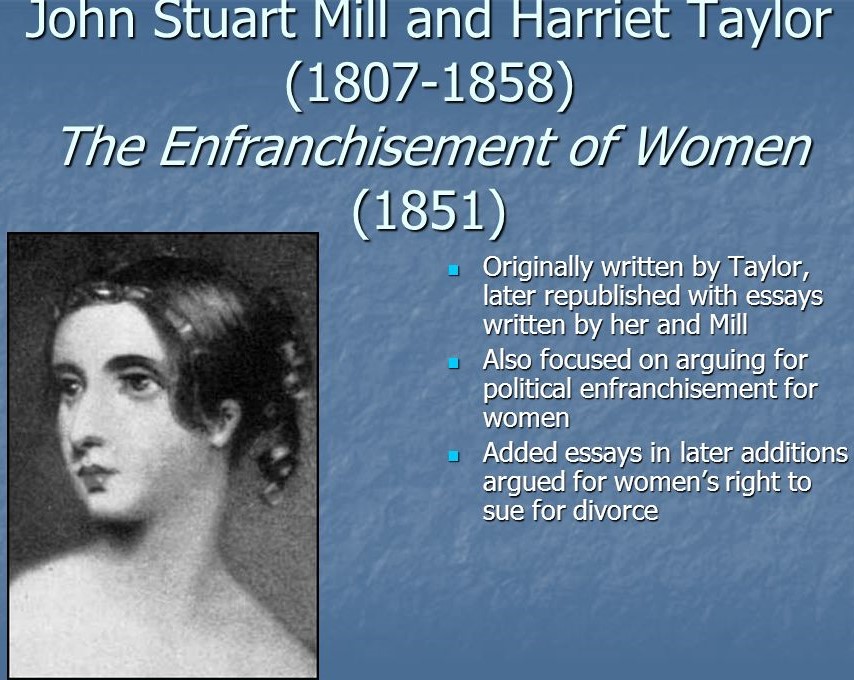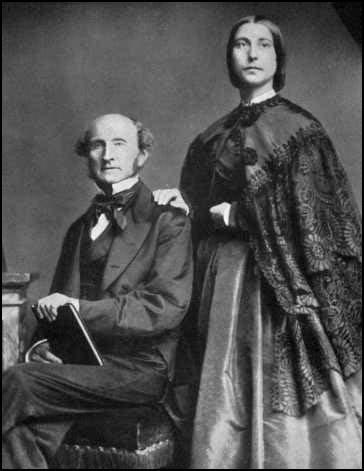Harriet Taylor Mill born in 1807, south of London was a British philosopher. Her works on equality between genders, women’s rights, for which she also advocated, made her known. The Complete Works of Harriet Taylor Mill consists of her collection of writing. She married John Stuart Mill (1806-1873).
Early Life of Harriet Taylor Mill
Harriet was born on 8th October 1807 in Walworth, London. Her parents were Thomas Hardy and Harriet. Her father was a surgeon. She taught herself and got some help from her parents. She developed an interest at a very young age in poetry writing.
In 1826, Harriet married John Taylor and had three children Algernon, Herbert, and Helen. In 1831, Unitarian’s leader set the meeting between Harriet and John Stuart Mill. Harriet’s husband invited John Mill for a dinner at his home, as he shared similar interests with her wife Harriet, on women’s rights.

When did Harriet start writing?
Harriet didn’t just write poetry, but she also had interests in the social reforming of society. Society for the Diffusion of Useful Knowledge (SDUK), who used to publish information for people who didn’t get a formal education or who preferred self-education, published Harriet’s Life of William Caxton.
John Stuart Mill and his effect on Harriet’s Life
John Stuart Mill (1806-1873), the second husband of Harriet Taylor Mill was a British philosopher, civil servant, and political economist. He was known to be a pre-eminent and influential thinker of that era.
After Harriet met Mill, She started writing articles and essays, unpublished and some unfinished pieces on women’s rights, marriage, and ethics. Mill and Harriet started sharing thoughts and essays on these topics. Soon, Harriet was attracted to John Mill, as Mill saw her as an equal intellectual person.
This bond continued between them for around 18 months after which, Harriet decided to break off the friendship with Mill. Mill wrote a love letter to her, which was in French and was very passionate. In the letter, he didn’t give up on her and wrote: “her paths and mine are separated, she says; but they can, they must, meet again”. He didn’t accept her ‘eternal adieu’, a forever goodbye. Although he said ‘her wish his command’. This letter is the only proof that exists, showing the relationship between them while she was married.
Harriet read this letter and agreed that this wasn’t the end and after this, they were close to each other more than ever. In 1837, they shared a couple of essays on On Marriage. She criticizes the fact “women are educated for one single object, to gain their living by marrying”.
What was the reason for the separation of Harriet with John Taylor?
This bond between Harriet and Mill, became the reason for the separation between her and her husband. In 1833, they started living in separate homes and Helen was living with Harriet and the other two with their father. Harriet and John Stuart spent most of their life apart from each other.
But then John got cancer and asked Harriet to come to take care of him. She refused because Mill had an injury and he needed someone to take care of him. Soon Mill recovered from the injury. John’s health became worse. Then Harriet went to take care of him until he died of rectal cancer in 1849.
The second marriage of Harriet Taylor Mill
Two years after the death of John, Harriet married Mill in 1851. The Mills then spent most of their life working on articles and essays together in their Black Heath Park Home. She had tuberculosis, according to arguments, she got this from John Taylor. Due to this, they were in the pursuit of quality of life and traveled to a healthier climate.

Works by Harriet Taylor Mill
The Complete Works of Harriet Taylor Mill contains finished and unfinished pieces of essays and articles on ethics and social philosophy, also include criticisms of religions, defense of women’s rights.
Some works of Mill, The Subjection of Women and The Utility of Religion show some amount of resemblance from Harriet’s unpublished articles and essays. She also contributed to Principles of Political Economy.
Harriet also produced a variety of articles on Monthly Repository, a Unitarian magazine of that era. Harriet first started publishing when she was pregnant with her third child. She is considered to be a co-author of numerous articles on domestic violence that were published in Daily News, Sunday Times, and Morning Chronicle during the period of 40s.
Autobiography by Mill, he claimed that Harriet co-authored a significant amount of work published under his name. In 1854, a letter written by Mill, includes him saying that the upcoming book should have 2 authors as a significant amount of work was by Harriet.
Mill described Harriet as a valuable contributor on “On Liberty“. He also dedicated this book to her, in 1859, a year after she died. As Mill considered Harriet a valuable contributor, opinions by his friend very different. Jane described her as “a peculiarly affected and empty body” and Thomas Carlyle, Mill’s friend, described Harriet as “full of unwise intellect”.
Westminster Review published Harriet’s Enfranchisement of Women in 1861. Work was significantly philosophical. Harriet did this work solely. This work was mainly about equality in rights for women in every field, social, political and civil.
Death
Later, in the year 1858, they went to Montepellier. Harriet’s life gave out in Hotel d’Europe, Avignon, France on 3 November, due to respiratory failure. Mill bought a small house near the cemetery of Harriet’s place of burial. He spent a considerable amount of his life there. In 1873, he died and buried in Avignon, France.